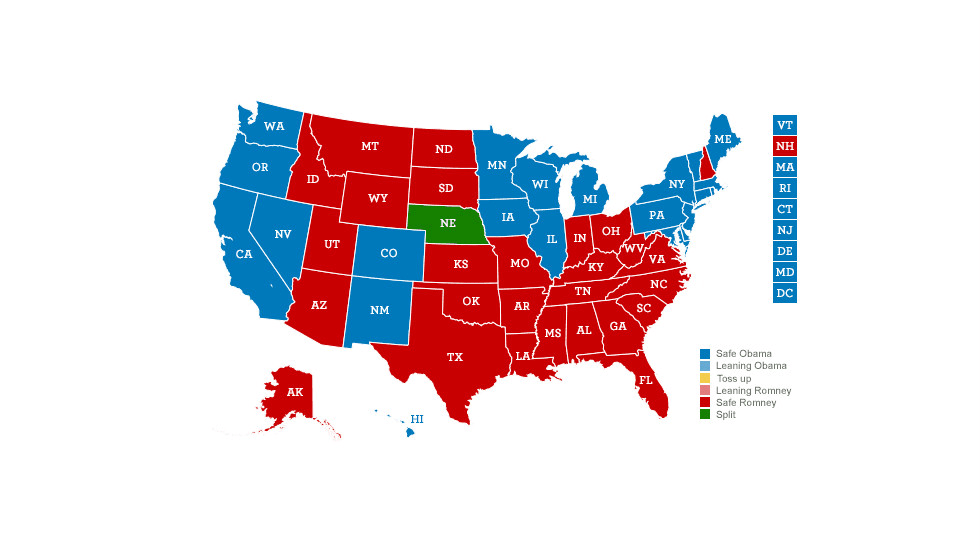It’s possible that a presidential election could end up in an Electoral College tie.
When you cast a vote for a specific presidential candidate in the general election, you are actually voting for that candidate’s electors. And as Austin Thompson explained, “as a matter of clarification, the result in November is just a guideline; the real action is in December, when the Electoral College votes.” It is not until each state’s chosen electors cast their votes, that the formality of the election is complete.
To win the presidency, a candidate must win 270 electoral votes, or a majority of the 538 electors at stake in the election.
But a presidential election could end up in an Electoral College tie, 269 to 269. Or it’s also possible that a third party candidate could win enough electoral votes to prevent any candidate from winning a majority.
In these instances, the presidential election is decided in the U.S. House of Representatives in a “contingent election,” with each state delegation having one vote. Only the top three candidates in terms of electoral vote are considered. Whichever candidate can win the majority of states, or 26, becomes the president.
Meanwhile, the U.S. Senate elects the vice president but only the top two candidates are considered. Whichever candidate wins the majority of senators, or 51, becomes vice president.
An Example
It didn’t happen, but during the 2012 presidential election there were at least seven possible paths to an electoral college tie, according to CNN.
 You can explore various combinations of states that lead to ties using any of our interactive electoral vote maps.
You can explore various combinations of states that lead to ties using any of our interactive electoral vote maps.
When an Electoral College Tie Is Not a Tie
If there is a tied electoral vote on Election Night, that doesn’t necessarily mean the tie will hold up when the Electoral College meets on the first Monday after the second Wednesday in November. That’s because only about half of the states have laws requiring electors to vote for the popular vote winner in their states.
For the other states, it’s possible that an elector could cast a vote for the other candidate. These are called “faithless electors.” In other words, a Republican elector in a state that voted for the Republican candidate might be able to legally cast their electoral vote for the Democrat, and vice versa.
That means an election that appears tied after the election could ultimately be decided by persuading some electors to change their votes.
What Happens If There’s a Second Tie?
According to the 12th Amendment to the U.S. Constitution, “if the House of Representatives shall not choose a President whenever the right of choice shall devolve upon them, before the fourth day of March next following, then the Vice-President shall act as President, as in case of the death or other constitutional disability of the President.”
That was later changed to the Vice President-Elect and to January 20 in the 20th Amendment.
It’s Happened Before
Two previous presidential elections were decided by the House of Representatives.
In 1800, Thomas Jefferson and Aaron Burr each garnered 73 electoral votes, with Jefferson ultimately prevailing.
The second time was in 1824. It wasn’t actually a tie but a four-way split in the electoral vote. Although Andrew Jackson had won the popular vote in that election, the House picked John Quincy Adams as president.
A related split in the electoral vote occurred in 1876, when South Carolina, Florida, and Louisiana submitted certificates of elections for both presidential candidates. That forced a bipartisan commission of lawmakers and Supreme Court Justices to review the ballots and ultimately award all three state’s electoral votes to Rutherford B. Hayes of Ohio, who won the presidency by a single electoral vote.
And in 2000, the Supreme Court ultimately had to step in to determine the winner after a dispute over Florida’s vote count in its Bush v. Gore decision.
Video: What Happens In an Electoral College Tie?
This helpful video also explains what happens in an Electoral College tie:
